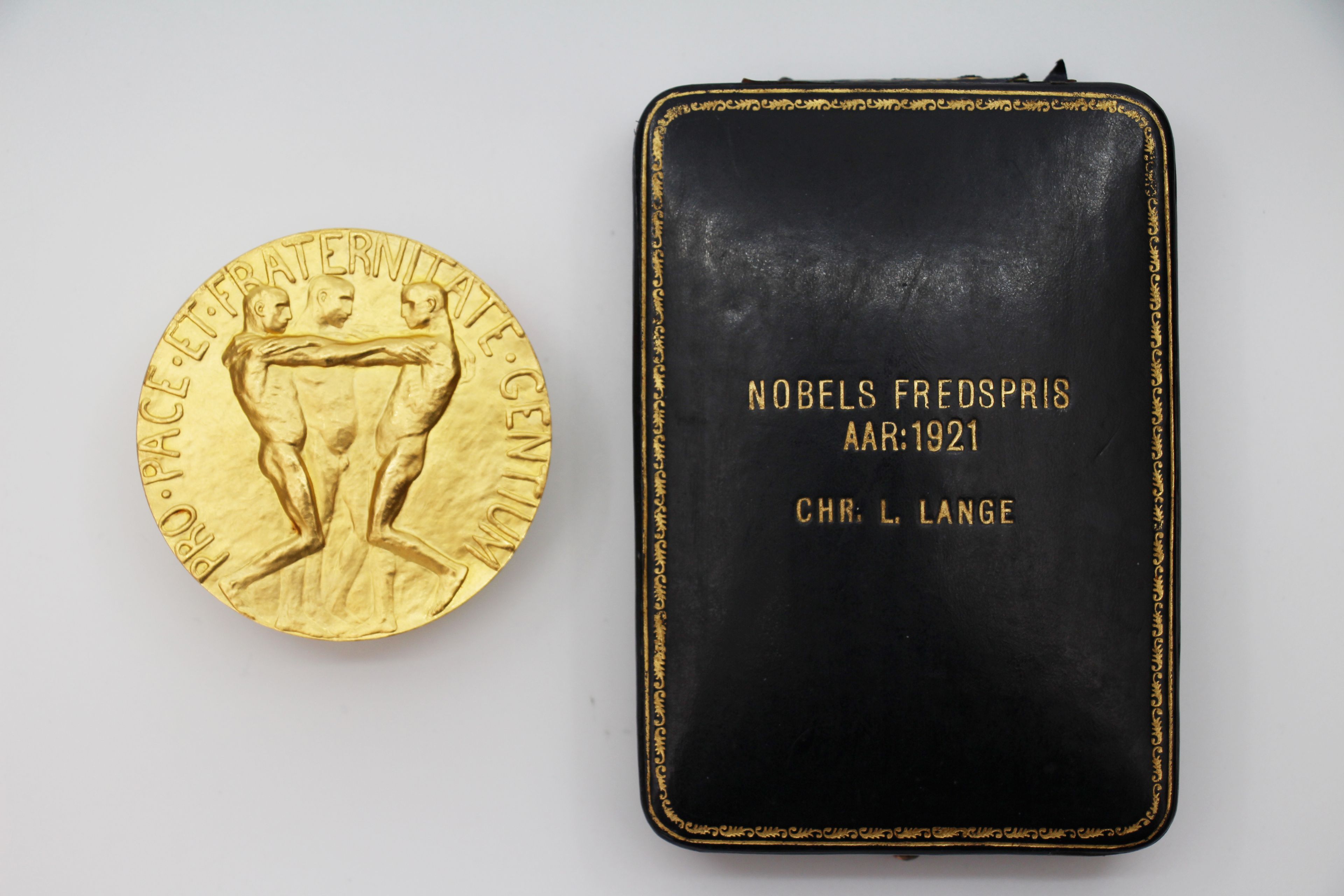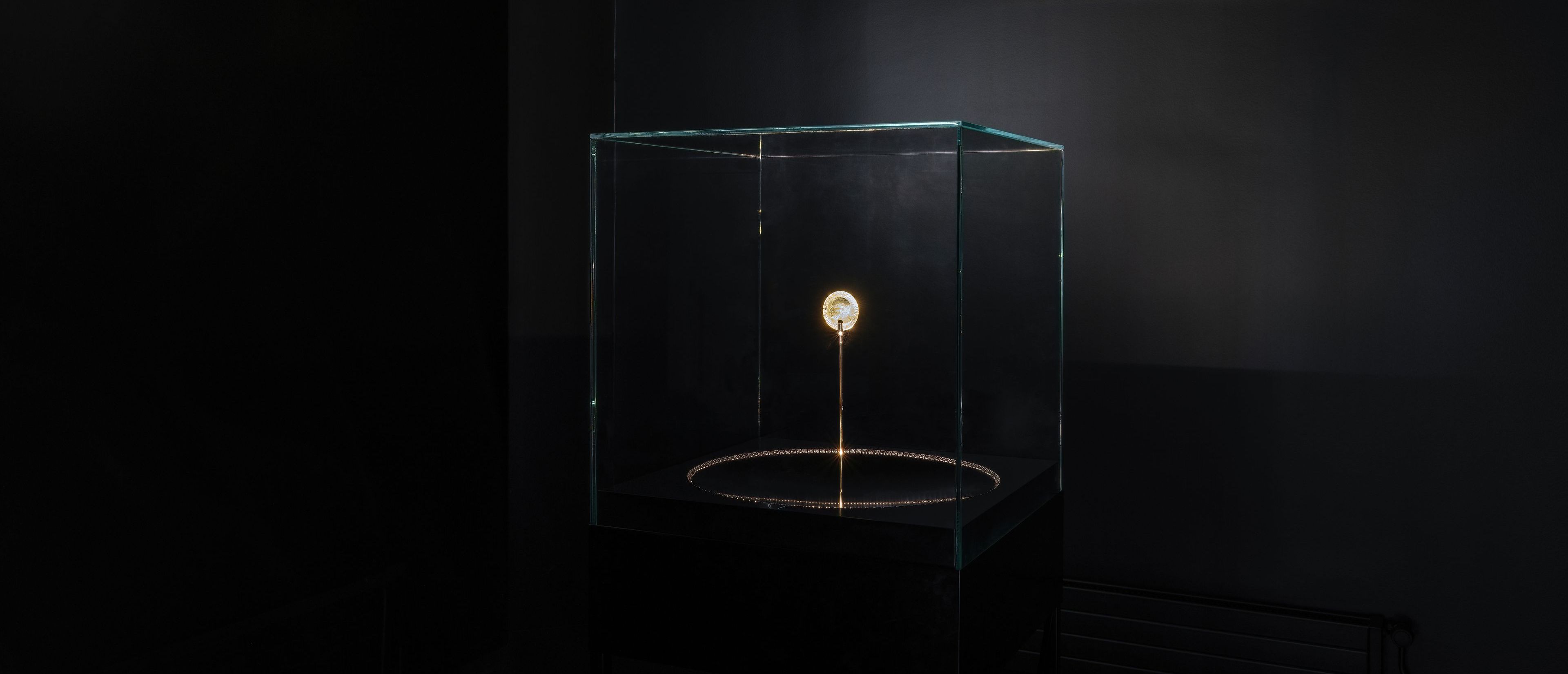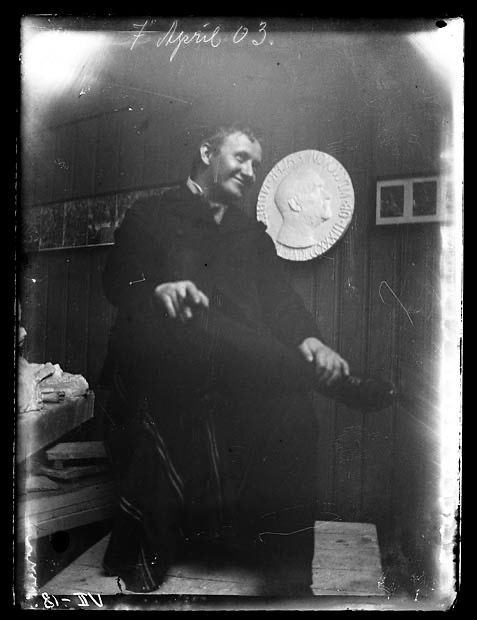The Nobel Peace Prize Medal
It is 6,6 centimetres in diameter, weighs in at 196 grams and is embossed in gold. On its face, a portrait of Alfred Nobel and on its reverse, three naked men holding around each other’s shoulders as a sign of brotherhood. This is what the medal, which is one of the world's foremost symbols of peace and reconciliation, has looked like for 120 years.
On the anniversary of Alfred Nobel's death, 10 December each year, a new copy is awarded. The nominee receives a large sum of money from the fund created by businessman and inventor Alfred Nobel, but it is only when the medal and the diploma that comes with it have been awarded that the recipient can call themselves a Peace Prize laureate.
"Brotherhood between nations"
When the Norwegian Parliament's newly established Nobel Committee created a medal competition in 1901, the 32-year-old artist Gustav Vigeland was at the beginning of his career. He had made his debut as a sculptor a decade earlier, but was still experimenting with his work and struggling to make a living. Together with the architect Henrik Bull and the artists Gerhard Munthe and Eilif Peterssen, he was offered NOK 200 to take part in the competition to design what would become the Norwegian version of the Nobel Medal.
The Norwegian Nobel Committee had some clear requirements for the design of the medal. While its face was to be decorated with Alfred Nobel's portrait, year of birth and death, the competition participants were also asked to draft an image that could suitably symbolize […] peace and brotherhood between nations[...] and carry the inscription ‘Pro pace et fraternitate gentium’.
The deadline was short and Vigeland started the task immediately. Concerned that the medal shouldn't appear too stern, he modelled the figures without sharp outlines and allowed the lettering to flow out to the edges. "By doing so, I think I have given the Medal a more loose and free impression”, Vigeland wrote.
Vigeland was used to working in large formats, and his medal draft was made of plaster and measured over 40 centimetres in diameter. The Swedish engraver Erik Lindberg scaled it down to medal format, and the new medal was ready for the award ceremony in 1902. (photo of Vigeland with the plaster model)
Fairmined gold
In October every year, Mint of Norway in Kongsberg receives an important assignment; it has to cast that year's Nobel Peace Prize medal. Not until after the year's Peace Prize has been announced by the Norwegian Nobel Committee does it become clear which name will be engraved along the edge of the medal, and whether one, two or three medals will be made. The mould has looked the same since 1902, and since 2015 the medal has been cast in fair-traded and traceable "Fairmined" gold from Colombia.
The Fairmined certification assures that responsible working conditions and environmental considerations are adhered to. And in the gold mines of Colombia, the rock is blasted with dynamite, which Alfred Nobel invented in the 1860s.
Gold for the medal is transported to Mint of Norway, where it is pressed and polished, and its edge inscribed with the name of the prize laureate and year. A case for the medal is made by a bookbinder who also makes the binding for the Peace Prize diploma. Then the medal is transported to the Nobel Institute, where it is safely kept in the vault together with the diploma until December 10, the day when the Nobel Peace Prize is awarded in Oslo City Hall.

Stolen and disappeared without a trace
Where the medal will be kept after the presentation is up to the Peace Prize laureate themselves. Some keep it at home, others lend it to a museum. There are also many cases of Peace Prize medals that have gone astray. The Nobel Medal to Artistide Briand, who received the award in 1926, was sold to a French museum in 2008. But a few years later it was stolen and it has never been recovered.
Shirin Ebadi (Nobel Peace Prize 2004) was robbed of her medal in 2009. According to the laureate herself, the medal was confiscated by the Iranian regime, something they denied. The medal was later returned, following international pressure
Thieves also stole Kailash Satyarthi's medal in 2017, three years after he received the award. But the thieves only got away with a copy. The real medal was in safe keeping at a museum. The copy was also quickly returned to its rightful owner.
After Doctors Without Borders had celebrated its Peace Prize with a fitting party after the prize banquet in 1999, the medal disappeared without a trace. It was recovered mysteriously the next morning, full of bite marks from people who wanted to check if it was real.
Medal on display
Only two Norwegians have received the Nobel Peace Prize: Christian Lous Lange (link to bio-text) in 1921 and Fridtjof Nansen the following year. When the Nobel Peace Center was to be established in 2005, Anne Kjelling worked as a Main librarian at the Norwegian Nobel Institute. She was an acquaintance of Christian Lous Lange's grandson, Viggo Lange. He told her that the medal had been inherited by Christian Lous Lange's son Halvard Lange, Viggo's father, and was now in the safe at the law firm where Viggo worked. The Main librarian and Lange's family thought it was a good idea to lend the medal to the new Peace Center, which was created to tell the story of the Nobel Peace Prize. And so it came to pass that one of two Norwegian Peace Prize medals ended up on a stand inside the Nobel Peace Center, built in the former Vestbane railway station. In the autumn of 2021, exactly 100 years after Lange received the award, the Nobel Peace Center opened a new exhibition in which the medal is the main focus. Today, audiences can see the medal in all its golden splendour.

"The beauty of genuine brotherhood and peace is more precious than diamonds or silver or gold."
Share:

